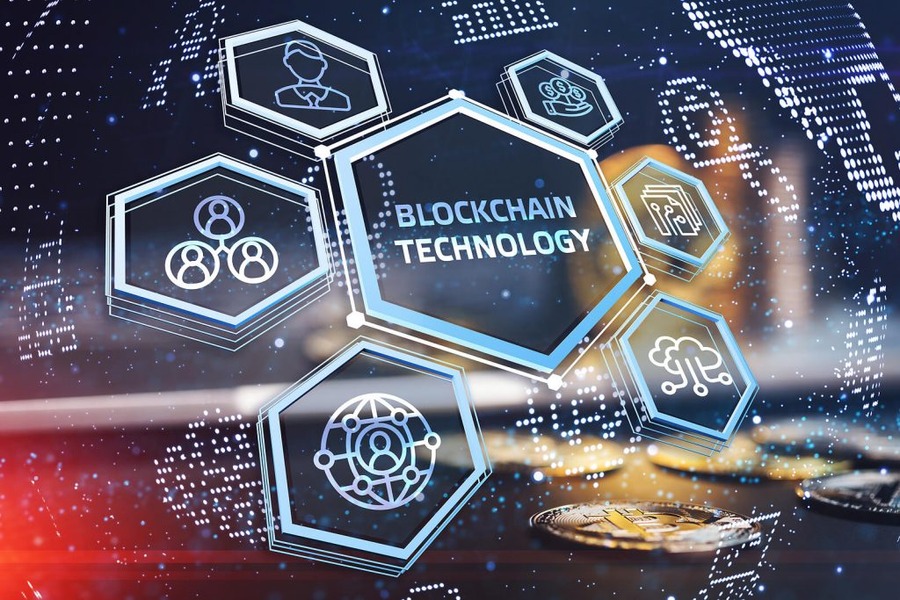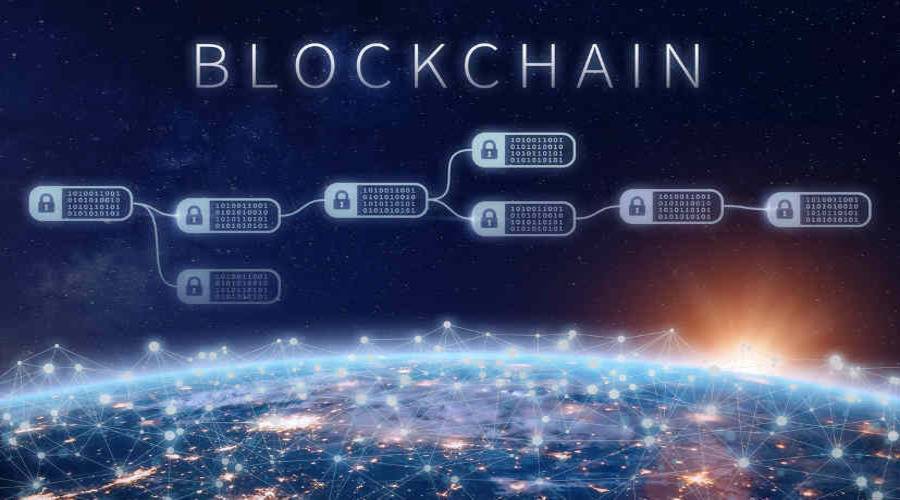Blockchain technology has emerged as a revolutionary force across various industries, and the art market is no exception. With its inherent features of security, transparency, and decentralization, blockchain holds great potential to transform the way art and collectibles are bought, sold, and authenticated online. In this article, we will explore the use of blockchain in creating secure and transparent online marketplaces for art and collectibles, understanding its benefits, challenges, and real-world applications.
Introduction to Art Market
The art market is a vibrant and dynamic industry, attracting collectors, investors, and enthusiasts from around the world. However, it has traditionally faced challenges related to fraud, provenance tracking, and trust issues. Blockchain technology provides a promising solution to these problems by leveraging its distributed ledger system, cryptographic algorithms, and smart contracts.
Understanding Blockchain Technology
Blockchain is a decentralized digital ledger that records transactions across multiple computers, ensuring transparency, immutability, and security. It operates on the principles of decentralization, consensus, and cryptographic hashing. Each transaction, or “block,” is linked to the previous one, creating a chain of blocks that form a tamper-proof record.
The key features of this technology include transparency, as all participants can view the entire transaction history; security, due to the cryptographic algorithms used to validate and secure the data; immutability, as once a block is added to the chain, it cannot be altered retroactively without consensus; and decentralization, which eliminates the need for a central authority.
Applications of Blockchain in the Art Market
- Authentication and provenance tracking: One of the significant challenges in the art market is determining the authenticity and provenance of artworks. This technology can address this issue by creating a digital certificate of authenticity and tracking the ownership history of an artwork. Each transaction involving the artwork, such as sales or transfers, is recorded on the blockchain, providing an immutable record of its provenance.
- Ownership and transfer of digital assets: With the rise of digital art and collectibles, it enables secure ownership and transfer of these assets. Through the use of non-fungible tokens (NFTs), unique digital assets can be created, verified, and transferred on the blockchain. NFTs ensure the scarcity and authenticity of digital artworks, revolutionizing the way artists and collectors monetize and trade digital creations.
- Royalty payments and smart contracts: Blockchain-based smart contracts allow for automatic royalty payments to artists whenever their artworks are resold. These contracts can be programmed to distribute royalties based on predetermined rules and conditions. By leveraging this technology, artists can receive fair compensation for the appreciation of their work over time, even in the secondary market.
Advantages of Blockchain-based Online Marketplaces

The integration of blockchain technology into online marketplaces for art and collectibles brings several advantages that enhance the overall experience for buyers, sellers, and artists alike.
- Eliminating fraud and counterfeit items: Counterfeit artworks and collectibles have plagued the art market for years, causing financial losses and damaging the reputation of artists and buyers. By leveraging blockchain’s transparent and immutable nature, online marketplaces can significantly reduce the risk of fraud and the circulation of counterfeit items. Each artwork’s unique digital fingerprint can be stored on this technology, providing a verifiable record of its authenticity.
- Enhancing trust and transparency: Trust is a crucial factor in any transaction, especially in the art market where provenance and authenticity are paramount. This technology promotes trust and transparency by providing a decentralized and tamper-proof record of every transaction. Buyers can easily access the complete history of an artwork, including its origin, ownership transfers, and exhibition records. This transparency builds confidence among buyers, leading to increased participation and engagement in the art market.
- Reducing intermediaries and costs: Traditional art marketplaces often involve multiple intermediaries, such as galleries, brokers, and auction houses, which can increase transaction costs and complicate the buying process. Blockchain-based online marketplaces have the potential to streamline these processes by directly connecting buyers and artists. By eliminating intermediaries, transaction fees can be significantly reduced, allowing artists to receive a more substantial portion of the sale proceeds while buyers can enjoy more competitive prices.
- Empowering artists and collectors: This technology empowers artists and collectors by providing new opportunities for monetization, ownership rights, and creative expression. Artists can tokenize their artworks as NFTs, gaining greater control over their intellectual property and receiving royalties for subsequent sales. Collectors, on the other hand, can easily track and prove the authenticity of their collections, enhancing their investment value and enabling seamless transactions in the secondary market.
Challenges and Limitations of Blockchain in the Art Market
While blockchain offers numerous benefits, there are also challenges and limitations that need to be addressed for widespread adoption in the art market.
- Adoption and integration issues: This technology is still relatively new and requires widespread adoption and integration by art market participants, including artists, galleries, collectors, and auction houses. The transition from traditional systems to blockchain-based platforms may pose technical and operational challenges, requiring education, training, and infrastructure upgrades. Collaborative efforts and industry-wide standards are necessary to facilitate a smooth transition.
- Scalability and energy consumption concerns: As blockchain networks grow in size and complexity, scalability becomes a critical issue. The current state of this technology, such as the Ethereum network, may face limitations in handling a high volume of transactions efficiently. Additionally, the energy consumption associated with blockchain mining processes has raised environmental concerns. Ongoing research and development efforts are focused on improving scalability and exploring more energy-efficient consensus algorithms.
- Legal and regulatory considerations: The art market operates within a complex legal and regulatory framework involving intellectual property rights, taxation, and cross-border transactions. Blockchain’s decentralized nature and the global nature of the art market may raise legal and regulatory challenges. Establishing legal standards and frameworks to govern blockchain-based art transactions, smart contracts, and digital rights management is essential to ensure compliance and protect the rights of all stakeholders.
Successful Examples of Blockchain-based Art Marketplaces
Several blockchain-based art marketplaces have emerged, showcasing the practical applications of this technology in the art industry. Here are three notable examples:
Maecenas
Maecenas is a blockchain-based platform that allows users to invest in fractions of artworks using cryptocurrency. It enables fractional ownership, liquidity, and transparent trading of high-value artworks. By tokenizing artworks as tradable digital assets, Maecenas opens up investment opportunities in the art market to a wider audience.
SuperRare
SuperRare is a leading blockchain-based art marketplace that focuses on digital art and collectibles. It leverages this technology to create and sell unique digital artworks as NFTs. Artists can mint their creations as limited editions or one-of-a-kind pieces, ensuring scarcity and authenticity. Collectors can purchase and trade these digital artworks securely on the platform, with all transactions recorded on the blockchain for transparency.
OpenSea
OpenSea is a decentralized marketplace for digital assets, including digital art and collectibles. It allows users to buy, sell, and trade NFTs from various platforms and projects. OpenSea provides a wide range of digital artworks, collectibles, and virtual land, catering to the growing demand for digital assets. The use of this technology ensures the authenticity, provenance, and secure ownership of these digital items.
Future Prospects and Potential Impact
The integration of blockchain in creating secure and transparent online marketplaces for art and collectibles holds immense potential for the future of the art market. It has the power to democratize access to art, allowing artists from around the world to reach a global audience and receive fair compensation for their work. Likewise, collectors can confidently invest in art, knowing that the provenance and authenticity of their purchases are verifiable.
By reducing the reliance on intermediaries, blockchain-based marketplaces can eliminate barriers and make art more accessible to a broader audience. The technology’s transparency and immutability instil trust and confidence in the art market, attracting new buyers and investors. Additionally, blockchain’s smart contracts enable automated royalty payments, ensuring artists are rewarded for their contributions even after the initial sale.
The impact of this technology on the art market ecosystem extends beyond buying and selling. It has the potential to revolutionize art financing, lending, and fractional ownership. Artists can explore new funding models, such as initial art offerings (IAOs), where investors can support artists by purchasing tokens representing fractional ownership in artworks. This innovation opens doors for emerging artists and promotes diversity and inclusivity in the art world.
Conclusion
This technology has the potential to transform the art market by creating secure and transparent online marketplaces for art and collectibles. Through the use of blockchain features such as authentication, provenance tracking, and smart contracts, art market participants can overcome challenges related to fraud, trust, and intermediaries. While there are challenges to overcome, successful examples like Maecenas, SuperRare, and OpenSea demonstrate the viability of blockchain-based art marketplaces.
Looking ahead, this technology is poised to democratize access to art, empower artists and collectors, and revolutionize the art market ecosystem. By embracing this technology and addressing the challenges, the art market can thrive in a secure, transparent, and inclusive online marketplace.
FAQs
- Q: Are all artworks on blockchain-based art marketplaces digital?
A: No, while many blockchain-based art marketplaces focus on digital art, some also support the sale of physical artworks with associated digital certificates of authenticity. - Q: Can anyone create and sell digital artworks on blockchain-based art marketplaces?
A: Yes, blockchain-based art marketplaces provide opportunities for artists of all backgrounds to showcase and sell their digital creations, subject to platform guidelines. - Q: How do buyers ensure the authenticity of digital artworks purchased on blockchain-based marketplaces?
A: This technology allows buyers to verify the authenticity of digital artwork by checking the transaction history and digital signatures associated with the artwork on the blockchain. - Q: Are blockchain-based art marketplaces accessible to international buyers and sellers?
A: Yes, blockchain-based art marketplaces have a global reach, enabling international buyers and sellers to participate in the art market without geographical limitations. - Q: Can blockchain technology prevent art market manipulation and price manipulation?
A: While this technology enhances transparency and provenance tracking, it cannot completely eliminate market manipulation or price manipulation. However, the immutable nature of blockchain records can provide a clearer picture of an artwork’s history, reducing the potential for fraudulent activities.
I’m a Crypto author and I have written for some of the most popular Crypto publications. I have also been interviewed by leading Crypto media outlets. My work focuses on providing accurate and actionable information to help people invest in Bitcoin and other digital currencies.
I have over 10 years of experience in the financial sector, and hold a degree in Economics from the University of London.
